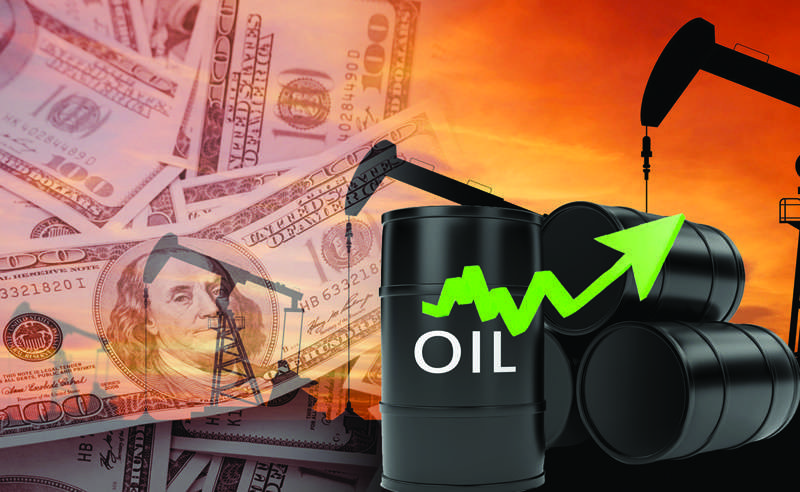Global Oil prices saw a slight dip on Monday 30th December 2024 in thin holiday trading as market participants awaited crucial economic data from China and the U.S. later in the week.
The data, set to be released in the coming days, is expected to shed light on the economic growth of the world’s two largest oil consumers, and could provide clarity on future demand prospects for crude oil.
By 0700 GMT, Brent crude futures had fallen by 8 cents to $74.09 per barrel, while the more actively traded March contract was priced at $73.73, down by 6 cents. Meanwhile, U.S. West Texas Intermediate (WTI) crude dropped 5 cents to $70.55 per barrel.
Analysts, including Ryan Fitzmaurice, senior commodity strategist at Marex, noted that global oil consumption reached an all-time high in 2024, despite China’s economic growth underperforming expectations.
“Going forward, China’s economic data is expected to improve as recent stimulus measures take hold in 2025. Also, lower rates in the U.S. and elsewhere should be supportive of oil consumption,” Fitzmaurice said.
The recent rally in oil prices was partly fueled by optimism surrounding economic growth, particularly in China. As the world’s largest crude oil importer, any positive signals from China carry significant weight for global oil markets.
In an effort to stimulate growth, Chinese authorities have agreed to issue a record 3 trillion yuan ($411 billion) in special treasury bonds for 2025, according to a Reuters report from last week. This move is expected to further boost demand for oil, especially as China looks to rebound from its post-pandemic slowdown.
Further supporting the outlook for oil demand from China, sources indicated that the country has already issued a significant volume of crude oil import quotas to independent refiners.
In a second batch for 2025, China has granted a total of at least 152.49 million metric tons of crude import quotas, signaling that the country is preparing for higher crude imports to meet growing demand.
This quota issuance is seen as a positive sign for oil traders, suggesting that Chinese refineries will continue to ramp up activity in the coming months, further increasing oil demand.
However, the picture is not entirely optimistic. The World Bank recently raised its forecast for China’s economic growth in 2024 and 2025, but tempered this optimism by cautioning that certain factors, such as weak household and business confidence and ongoing challenges in the property sector, could act as a drag on economic recovery.
This mixed outlook for China’s growth has led to a cautious tone among some analysts and market participants, even as there are expectations for higher oil demand in the region.
U.S. Economic Data and Oil Price Outlook

In the U.S., traders are closely watching the upcoming data to gauge the direction of the economy and its potential impact on oil consumption. China’s Purchasing Managers’ Index (PMI) for December will be released, followed by the U.S. Institute for Supply Management (ISM) manufacturing survey for December.
These reports are expected to provide insights into the health of the manufacturing sector in both countries, with implications for oil demand. A stronger-than-expected PMI or ISM report could fuel optimism for oil prices, while disappointing data could lead to renewed concerns over demand.
The U.S. economy has shown resilience throughout much of 2024, aided by robust consumer spending and a strong labor market. However, concerns persist over inflation and interest rates, and the Federal Reserve’s actions will continue to be a critical factor for economic growth in 2025.
A slowing of rate hikes, or potential rate cuts, could ease pressure on the economy and further support oil consumption, particularly in sectors like transportation and manufacturing, which are closely tied to fuel demand.
Meanwhile, geopolitical issues continue to influence global energy markets, with the ongoing situation regarding Russian gas exports causing ripples through the energy landscape.
Hopes for a new deal to transit Russian gas through Ukraine have been fading after Russian President Vladimir Putin stated last Thursday that there was no time left in 2024 to sign a new agreement.
This development has caused concern among European nations, which are already grappling with energy shortages, and could lead to further volatility in global energy prices.
Russia’s role in the global energy market, particularly in Europe, remains a major factor for oil and gas prices. While oil traders have been relatively focused on growth prospects in China and the U.S., developments surrounding Russian energy exports will likely remain a key source of uncertainty heading into 2025.
As 2024 draws to a close, analysts remain cautiously optimistic about oil’s outlook for 2025. With low stockpiles and economic stimulus measures in key markets, there is potential for further price gains.
However, as always in the volatile world of oil trading, the path ahead remains uncertain, and traders will continue to monitor a variety of factors, from economic data to geopolitical developments, as they assess the direction of oil prices into the new year.
READ ALSO: World Leaders Pay Tribute To Jimmy Carter



















